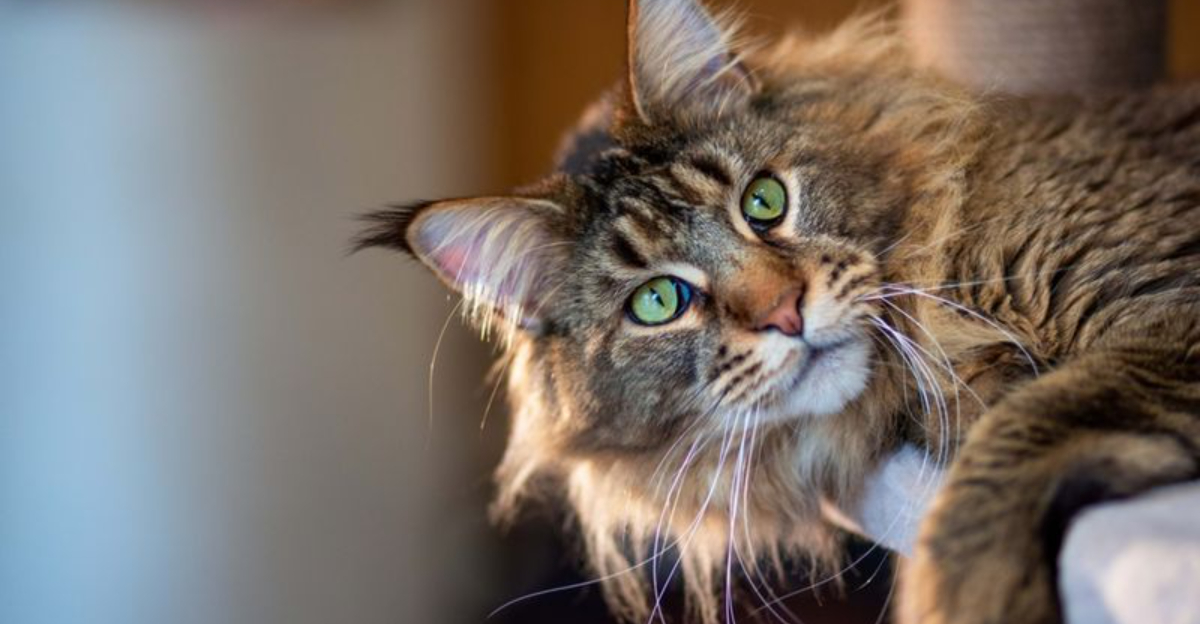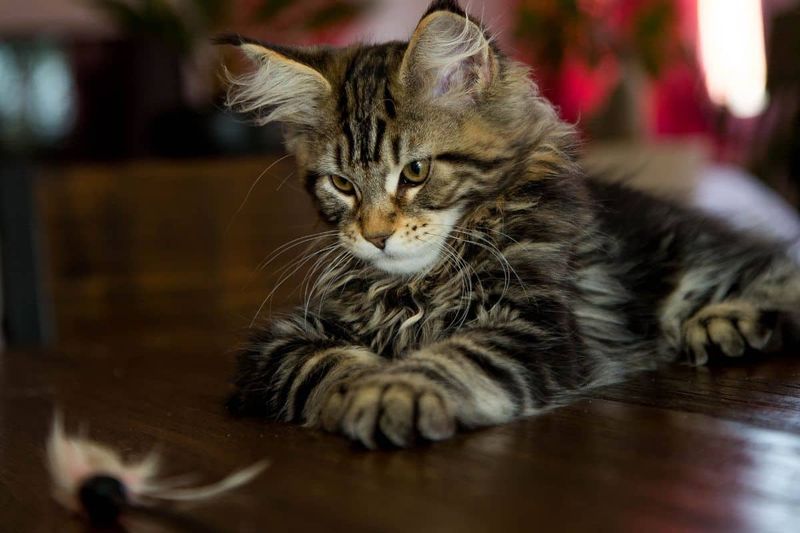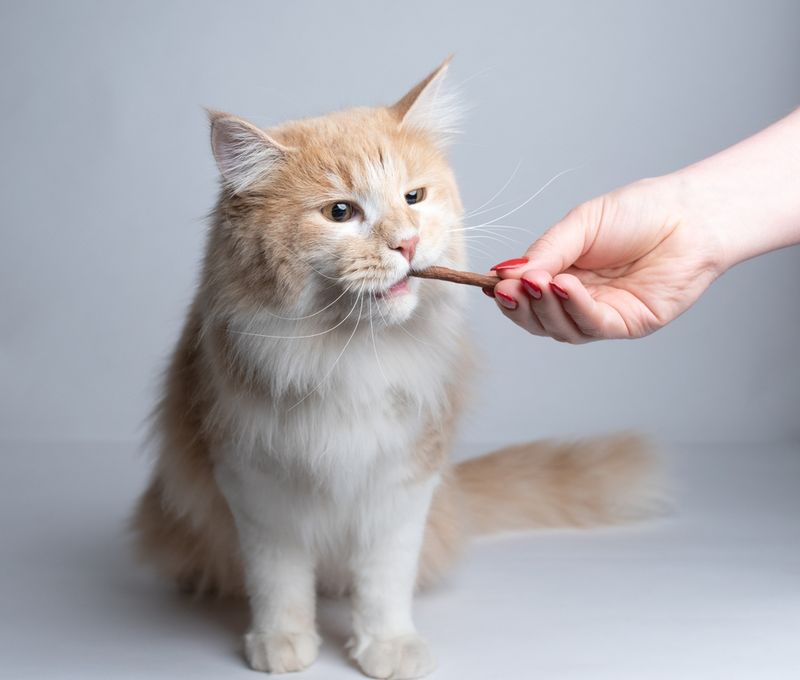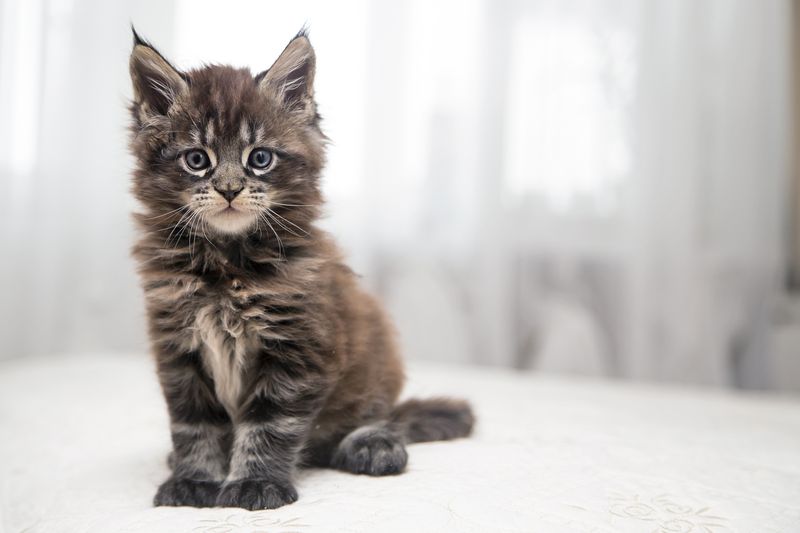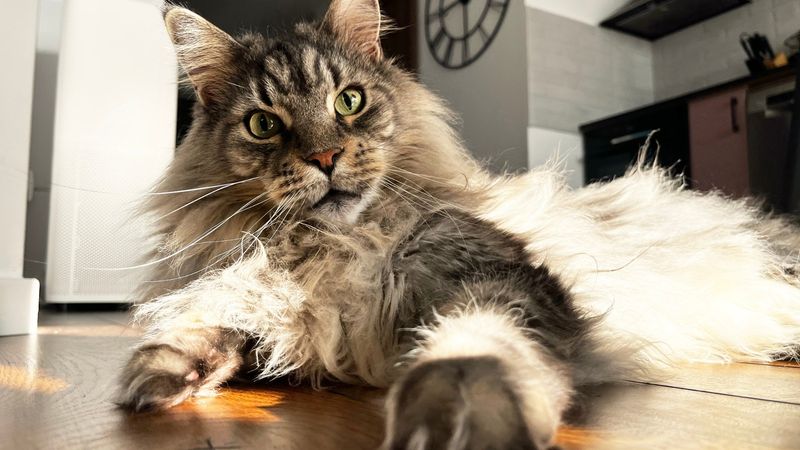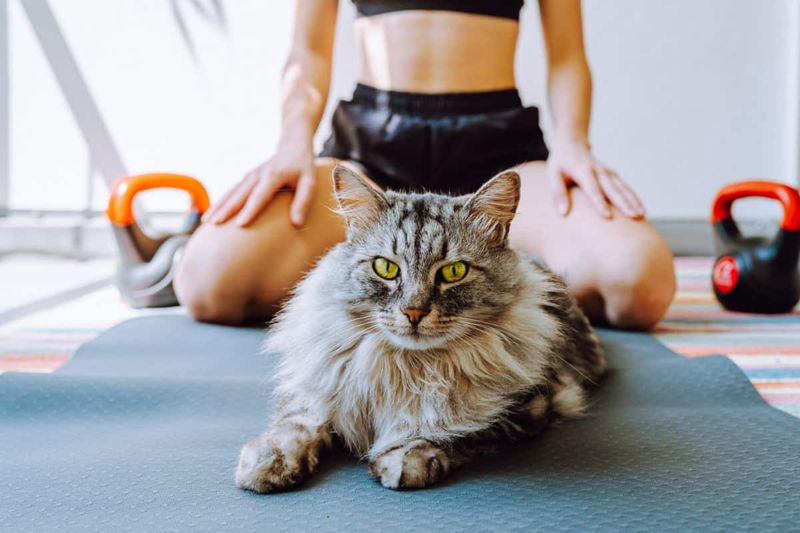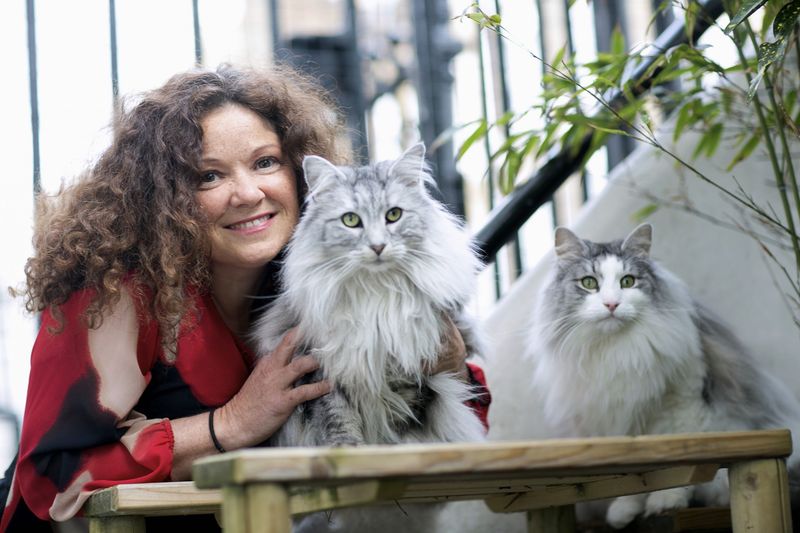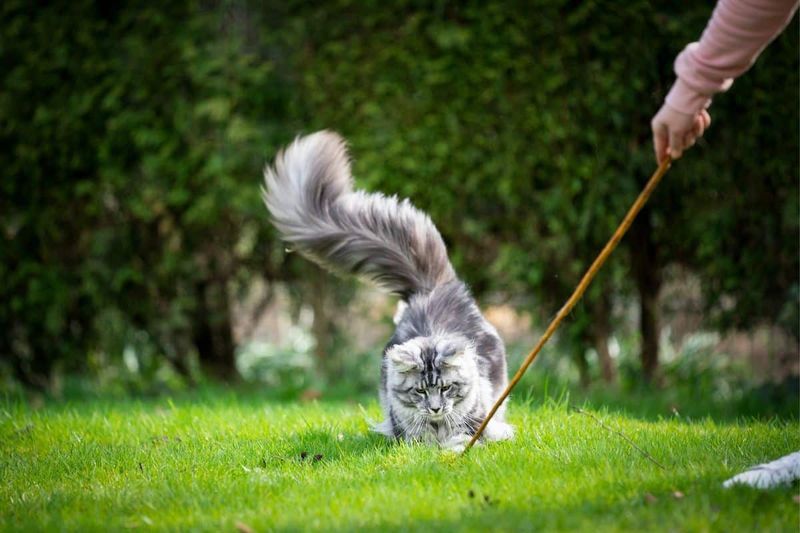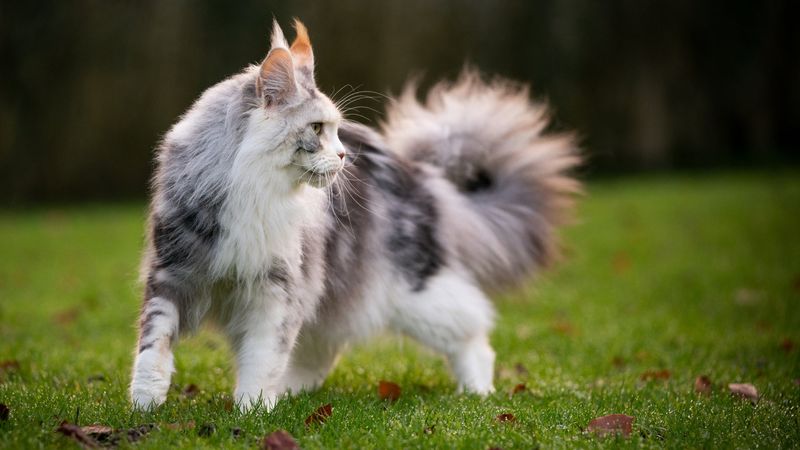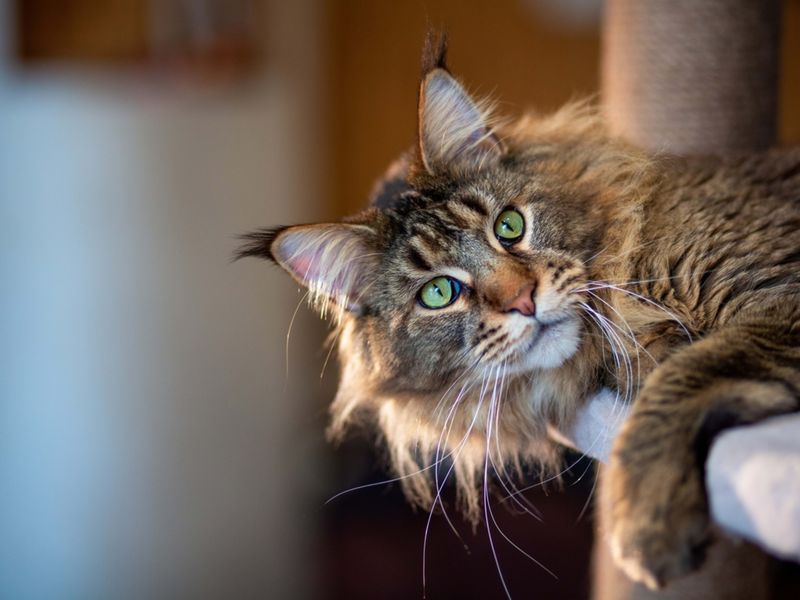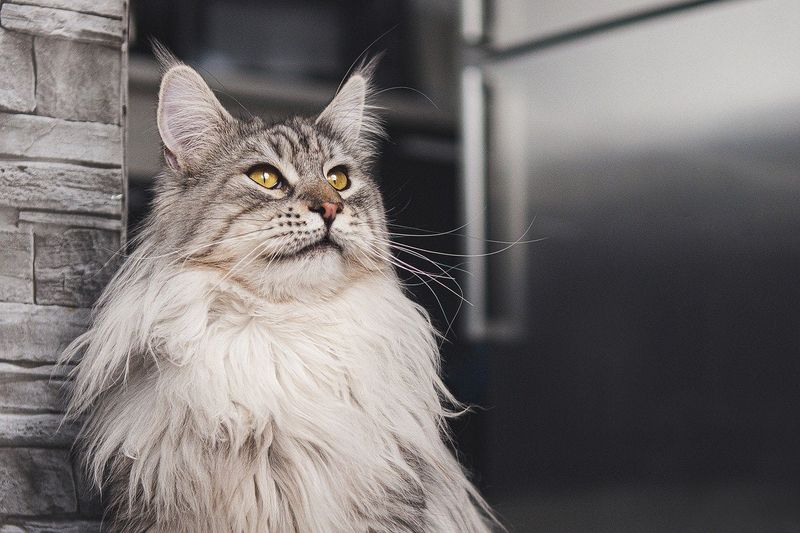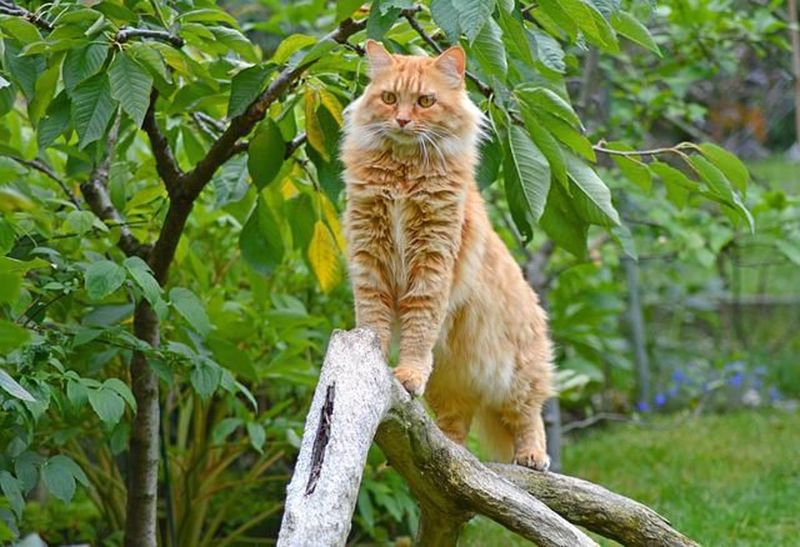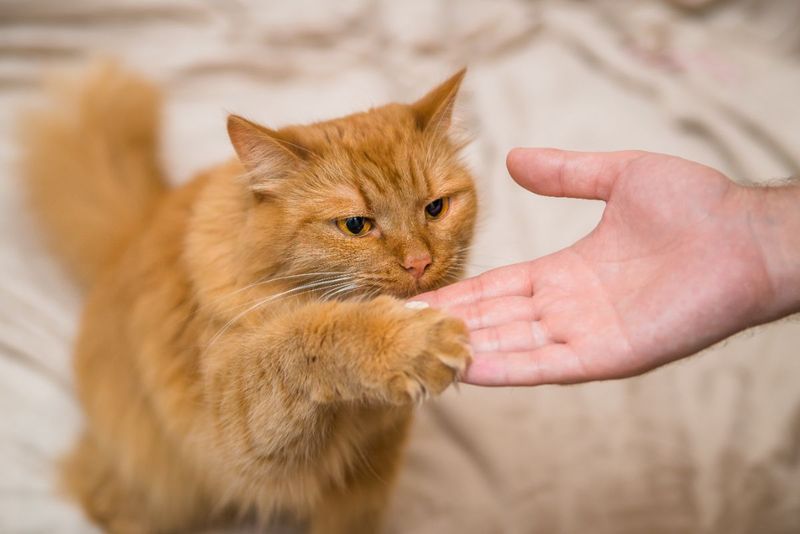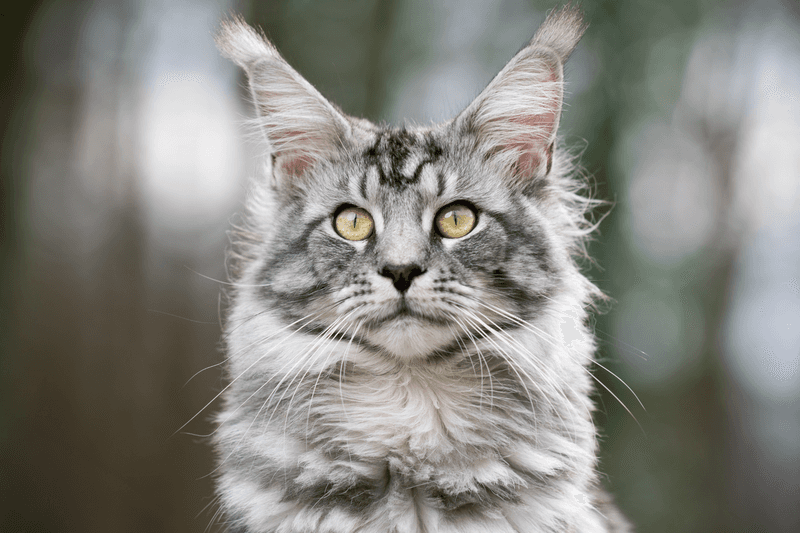📖 Table of Content:
- 1. Start Training Early
- 2. Use Positive Reinforcement
- 3. Understand Their Body Language
- 4. Keep Sessions Short and Fun
- 5. Socialize Your Cat
- 6. Incorporate Clicker Training
- 7. Provide Mental Stimulation
- 8. Be Consistent
- 9. Use Treats Wisely
- 10. Set Realistic Expectations
- 11. Create a Safe and Comfortable Environment
- 12. Respect Their Individual Personality
- 13. Use Clear and Consistent Commands
- 14. Be Patient and Persistent
- 15. Encourage Exploration
Training a Maine Coon cat provides an opportunity to strengthen the bond between owner and pet while ensuring a well-behaved companion. Known for their intelligence and playful personalities, these cats are highly trainable and eager to engage with their owners. However, understanding their unique behaviors and needs is key to successful training.
Maine Coons are not only social but also quick learners, which makes training an enjoyable experience. While they are often more independent than other breeds, their curiosity and affection can be leveraged to encourage positive behaviors. By focusing on their strengths, such as their problem-solving abilities, training becomes a rewarding process for both the cat and the owner.
Achieving success in training a Maine Coon requires patience and consistency. With the right techniques, such as positive reinforcement, these cats will respond eagerly to commands and cues. The following 15 expert tips are designed to guide owners through the training process, promoting a strong, trusting relationship with their Maine Coon.
1. Start Training Early
Training your Maine Coon should start as early as possible. Kittens are more receptive to new experiences and can learn behaviors faster. Begin with simple commands like ‘sit’ or ‘stay’. Use a gentle voice and reward them with treats or affection.
This helps to build trust and establish a positive association with training. Remember, patience is key. Young cats may not understand immediately, but consistency will pay off. Breaking lessons into short, focused sessions can prevent overwhelming your kitten, making the learning process enjoyable and effective.
2. Use Positive Reinforcement
When training your Maine Coon, positive reinforcement plays a vital role. Cats respond positively to rewards like treats, toys, or affection for displaying the right behaviors. This approach motivates them to repeat those actions, while punishment can cause fear and slow down progress.
Instead, focus on rewarding successes and ignoring unwanted behaviors. Gradually, your Maine Coon will associate good behavior with positive outcomes. Patience and consistency are essential, ensuring your cat feels safe and motivated to learn.
3. Understand Their Body Language
Interpreting your Maine Coon’s body language is vital for effective training. Cats communicate through subtle cues, such as ear positions, tail movements, and eye contact. Understanding these signals helps you gauge their mood and receptiveness to training.
For instance, a twitching tail may indicate frustration, while a relaxed posture suggests they are comfortable. By responding appropriately, you can create a supportive training environment. This understanding fosters a stronger bond, making your Maine Coon more eager to engage and learn new commands.
4. Keep Sessions Short and Fun
To keep your Maine Coon interested, training sessions should be brief and enjoyable. Try 5-10 minute sessions, concentrating on one skill at a time. Use fun toys and games to make learning more interactive.
Cats have short attention spans, so keeping activities fun prevents boredom. End each session on a positive note, rewarding them with treats or playtime. This reinforces the idea that training is a pleasurable activity. Regular, enjoyable sessions encourage your Maine Coon to participate willingly, enhancing their ability to learn and retain new skills.
5. Socialize Your Cat
A well-socialized Maine Coon is more confident and less anxious. Gradually introducing your cat to various environments, people, and animals helps them adapt. Start in calm surroundings and use treats and praise to make the experience positive.
A well-socialized cat is more adaptable and easier to train. This exposure reduces fear of the unknown, making training in different scenarios more effective. Building these experiences into their routine enhances their social skills and prepares them for diverse situations.
6. Incorporate Clicker Training
Using a clicker is an effective way to teach your Maine Coon new skills. The clicker’s sound signals the exact moment your cat performs the right action, immediately followed by a reward. This clear communication helps reinforce positive behaviors.
Clicker training requires consistency and timing. Begin with simple tasks, gradually building up to more complex tricks. This method strengthens the bond between you and your cat, as it relies on mutual trust and understanding, making training sessions more productive and enjoyable.
7. Provide Mental Stimulation
Keeping your Maine Coon mentally stimulated is essential for successful training. These intelligent cats thrive on challenges that engage their minds. Use puzzle feeders, interactive toys, or training exercises that require problem-solving. Mental enrichment prevents boredom and reduces the likelihood of behavioral issues. Rotate toys regularly to maintain interest.
Stimulating your cat’s mind not only aids in their training but also enhances their overall well-being. By providing opportunities for mental engagement, you keep your Maine Coon happy, active, and ready to learn.
8. Be Consistent
The key to successful training is consistency. Always use the same commands and cues for specific behaviors, and make sure everyone in the household follows the same routine. This eliminates confusion and accelerates your cat’s learning.
Repetition reinforces learning, making commands second nature. Consistency builds trust, as your cat knows what to expect and what is expected of them. By providing a stable training environment, you create a foundation for successful learning and a harmonious relationship with your feline companion.
9. Use Treats Wisely
When used effectively, treats can enhance your Maine Coon’s training experience. Pick small, high-quality treats that your cat enjoys and only use them during training sessions. This adds motivation, while still balancing their food intake to avoid overfeeding.
Introduce variety to keep your cat interested. Treats should be used to reward specific behaviors, reinforcing positive actions. Gradually reduce treat frequency as your cat masters commands, transitioning to verbal praise or affection. This ensures your Maine Coon remains motivated without relying solely on treats as rewards.
10. Set Realistic Expectations
It’s important to have realistic expectations while training your Maine Coon. Each cat learns at its own pace and may have different preferences. Set achievable goals, celebrate small wins, and remember that some behaviors may require more time to master.
Patience is vital; avoid comparing your cat to others. Focus on progress rather than perfection. By setting realistic expectations, you reduce frustration and create a positive training experience. This approach fosters a supportive environment, encouraging your Maine Coon to continue learning and improving at their own pace.
11. Create a Safe and Comfortable Environment
A secure and environment is key to effective Maine Coon training. Ensure your home offers cozy spots for relaxation and play, free from hazards. A familiar and comfortable setting helps your Maine Coon feel at ease and more likely to engage in training.
By prioritizing their comfort, you create an atmosphere where they feel confident and eager to participate in training sessions. This supportive environment is foundational for building trust and fostering a positive learning experience.
12. Respect Their Individual Personality
Effective training starts with recognizing your Maine Coon’s unique personality. Each cat’s traits and preferences will shape their response to training. Pay attention to what drives your cat—whether it’s treats, toys, or affection—and use that as motivation during sessions.
Tailor your approach to align with their unique character. This personalization strengthens your bond, making training sessions more enjoyable and effective. By acknowledging their individuality, you create a training environment that respects their needs, leading to more successful and fulfilling interactions.
13. Use Clear and Consistent Commands
Consistency in commands is crucial when training your Maine Coon. Stick to simple, one-word commands to ensure clarity, and make sure everyone uses the same language to avoid confusion. Repeating commands with consistent tone and volume reinforces the connection between words and actions.
This clarity in communication builds trust and confidence, enhancing your cat’s response to training. By maintaining clear communication, you create a straightforward path for your Maine Coon to follow, leading to successful and efficient learning experiences.
14. Be Patient and Persistent
For successful Maine Coon training, patience and persistence are crucial. Cats learn at their own pace, and progress may differ, so it’s important to remain calm and supportive. Consistent encouragement and effort ensure a positive and effective training experience.
Celebrate small achievements and remain patient through setbacks. Persistence pays off, as repetition and positive reinforcement lead to mastery over time. By being patient and persistent, you foster a trusting relationship with your Maine Coon, creating a strong foundation for lifelong learning and cooperation.
15. Encourage Exploration
Promoting exploration is a great way to enhance your Maine Coon’s learning process. Encourage your cat to explore new toys, environments, and activities, as it keeps their curiosity piqued. Supervised exploration builds key traits like confidence and adaptability for successful training.
This strategy not only fosters learning but also strengthens your bond with your cat. By supporting their natural curiosity, you create a dynamic and interactive training environment that promotes growth and development.
